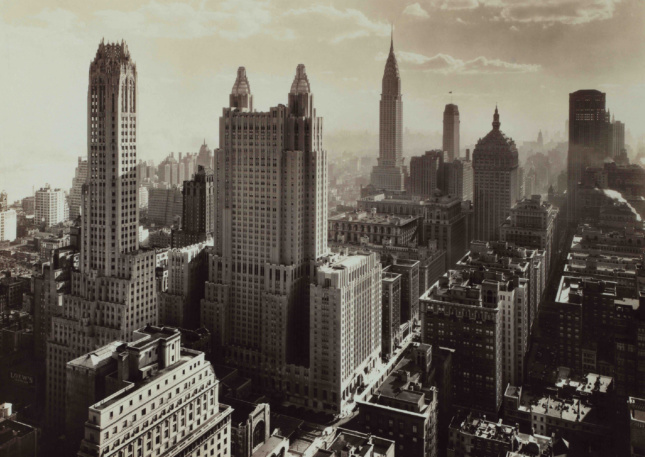A new exhibit at The Skyscraper Museum in New York City traces the evolution of the city’s skyline from the 19th century to the present day and into plans for the future. With a mix of archival photography, interactive graphics, models, and drawings, the exhibit breaks down the skyline’s history into distinct eras and traces the various influences that have shaped the city.
In the exhibit, the history of the city’s buildings becomes a lens through which to view the history of the city, and even the country, as a whole. Technological innovations like the elevator and electric lighting are given form as buildings become radically taller and bigger, visible indications of radical changes in the way city dwellers lived. Other forces, like the rise of building setback codes and the later creation of privately-owned public spaces (POPS), are illustrated with detailed models and explanations of figures like Hugh Ferris and others who have permanently changed skyscraper design in New York and around the world.
Highlights of the show include extremely detailed photos from the early 20th century and panoramas that track the skyline’s evolution over more than a century.
The exhibit shows how New York City, with a vertical cityscape unlike almost any other in the world, actually reflects global trends and innovations as much as it charts its own course.
Photographs in the show bring to life the city’s past as a mid-rise port for steamships and schooners in stunning detail. It’s almost possible to count the bricks on some 1876 views.
The show follows the city into the glass-and-steel postwar period and charts the rise of new supertalls in midtown. Current and future projects are put into context by comparing them to the designs and technology of their predecessors. Without explicitly praising or criticizing any developments, the show presents change simply as an inevitable part of the life of the city.
SKYLINE
Open through January 2019
The Skyscraper Museum
39 Battery Place
New York, New York, 10280
